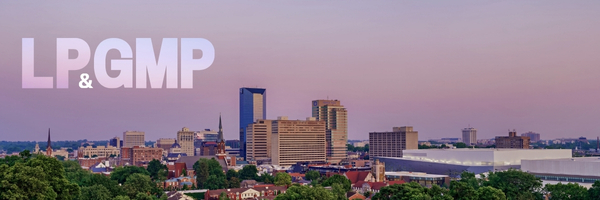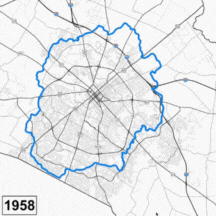Lexington’s Preservation & Growth Management Program
The Lexington Preservation and Growth Management Program will guide growth decisions around the Urban Service Boundary and must be formalized by August 31, 2026.

Update | December, 2025
On Tuesday, December 2nd, the General Government & Planning Committee (GG&P) received an update on the proposed Lexington Preservation & Growth Management Program (LP&GMP) from Planning Staff.
-
Details: The revised text included updated criteria for future growth areas and emphasizes the importance of protecting our agricultural land while maintaining the urban-rural balance.
-
These updates are promising, however, important work remains in this ongoing, legacy process.
After the presentation, The GG&P Committee unanimously voted to send the revised draft to the full Urban County Council for discussion at the Work Session on Tues., Jan. 20 at 3 p.m.
-
Next Steps: We encourage you to share your voice — either by attending the session or contacting the Council beforehand. More information on how to take action will be shared in the new year.
Fayette Alliance will continue advocating for clear redevelopment goals, identification and involvement of key stakeholders in any subcommittee appointed to review future growth areas, and policies that protect the Urban Service Boundary when it comes to any Special Economic Development need as the process moves forward.
We appreciate the ongoing engagement of Planning Staff and Council, and look forward to continuing these discussions.
-
Important: We are close to developing a legacy, data-driven process for guiding growth decisions, but it’s vital that the details be worked out
We know the question is not if we grow, but how.
- Remember: Once finalized, the LP&GMP will help decide how and when to expand Lexington’s Urban Service Boundary, a process that has never been formalized since the boundary was established in 1958.
- That’s why: It’s so important we get this right – and the smallest details matter.


Position Statement
After extensive review of the most recently proposed draft, Fayette Alliance has finalized its full position statement on the current Lexington Preservation & Growth Management Program draft.

There is a lot to love about the proposed draft, and we are thankful for the work both Planning Staff and Council have put into this proposal to give our community the data-driven growth process it deserves.
- However: While we support many aspects of the proposed draft, some aspects still remain concerning.
Areas of Concern
Within the current draft plan, we have areas of concern regarding the following topics:
- Redevelopment
- Preservation
- Vacant Land Review
- Land Application Review
- Special Economic Development Need
Redevelopment
Just as much focus, emphasis, and data should be identified and measured for the redevelopment of existing land as the development of vacant land inside the USB.
- Research shows that redevelopment can create just as many housing units in our community as the new, vacant, expansion areas.
- It is imperative that redevelopment data be gathered, tracked, and included in any formula to measure growth needs, to better demonstrate the reality that not all housing units will need to be built on vacant land.
Preservation
More context around preservation is needed, including clearly defined goals for preserving our best farmland for agricultural uses.
- In order to help future decision-makers and stakeholders better understand the importance of preservation and the vital balance between our urban and rural areas, language should be written into the ordinance that explains the economic and social benefits of protecting Lexington-Fayette County’s rural landscape.
Vacant Land Review
If the Urban County Council decides additional land needs to be incorporated into the Urban Service Area, and the Planning Commission organizes a Subcommittee to evaluate existing vacant land and/or new proposals for future growth areas, formal language should be included in the ordinance that ensures representatives of the rural community are represented within the Subcommittee.
Land Application Review
If a “need” for more vacant land is established, the current proposal only requires three locational criteria for property owners to submit proposals for inclusion in the Urban Service Area: (a) contiguous to the existing USB, (b) adjacent to an arterial/major collector roadway, and (c) access to sanitary sewer connections.
- More criteria are necessary to properly evaluate the location of proposals for development, considering the significant financial, environmental, and cultural impacts of development in our community. These criteria include soil quality, proximity to permanently conserved land, community landmarks, historic settlements, local/state/federally designated scenic areas, environmentally sensitive areas, and more.
- Land should not be identified for potential future development before infrastructure costs are evaluated and the long term impact on Lexington-Fayette County taxpayers is analyzed and made public.
- The Planning Commission should be provided the flexibility to define a “study area” for master planning that will allow for comprehensive communities and not only property lines.
Special Economic Development Need
The ability of the Urban County Council to identify specific acreage for a “special economic development purpose” at any time is concerning and risks undermining the concept of the Urban Service Boundary and a designated Urban Service Area without more careful guardrails.
- Additional discussion and exploration of criteria to ensure this is not a loophole to our responsible growth planning is necessary, including a full analysis of existing economic development trends over the past 20 years, including data on land absorption, jobs created, and revenue generated to be submitted with any proposal.
For more details and information regarding each area of concern, please read our full position statement.
How We Got Here
In June of 2023, the LFUCG Urban County Council adopted the Goals and Objectives of the city’s comprehensive plan known as Imagine Lexington 2045.
-
Within the Goals and Objectives, an expansion of the Urban Service Boundary (USB) was mandated by Council, which resulted in 2,800-acre expansion for housing and jobs.
-
Remember: The Urban Growth Master Plan was adopted to guide development in those 2,800 acres.
-
Additionally: Council mandated a formalized process be established by August 31, 2026 to guide future decisions about growth and expansion of the Urban Service Boundary.
History
Lexington was the first city in the United States to formally adopt an Urban Service Boundary in 1958.
-
We believe this forward-thinking decision demonstrates our community’s historical commitment to being good stewards of our finite land.
Since 1958, other cities have followed our lead and adopted Urban Growth Boundaries to balance urban growth with their natural landscapes — Portland, OR; Boulder, CO; and Fresno, CA to name just a few.
-
However: While we initially set the standard for stewardship, other cities have implemented formalized data-driven decision-making processes for guiding growth.
-
Factors that guide expansion decisions for other cities include population and economic growth; land supply analysis, including examining the density of existing development and identifying potential infill and redevelopment opportunities; environmental impacts of expansion; and more.
While Lexington’s USB has changed, expanded, and shrunk throughout the years, we have not formalized an expansion process since the USB was established in 1958.
-
That means our community is aiming to adopt a process that is nearly 70 years in the making.
We have to get this decision right.

